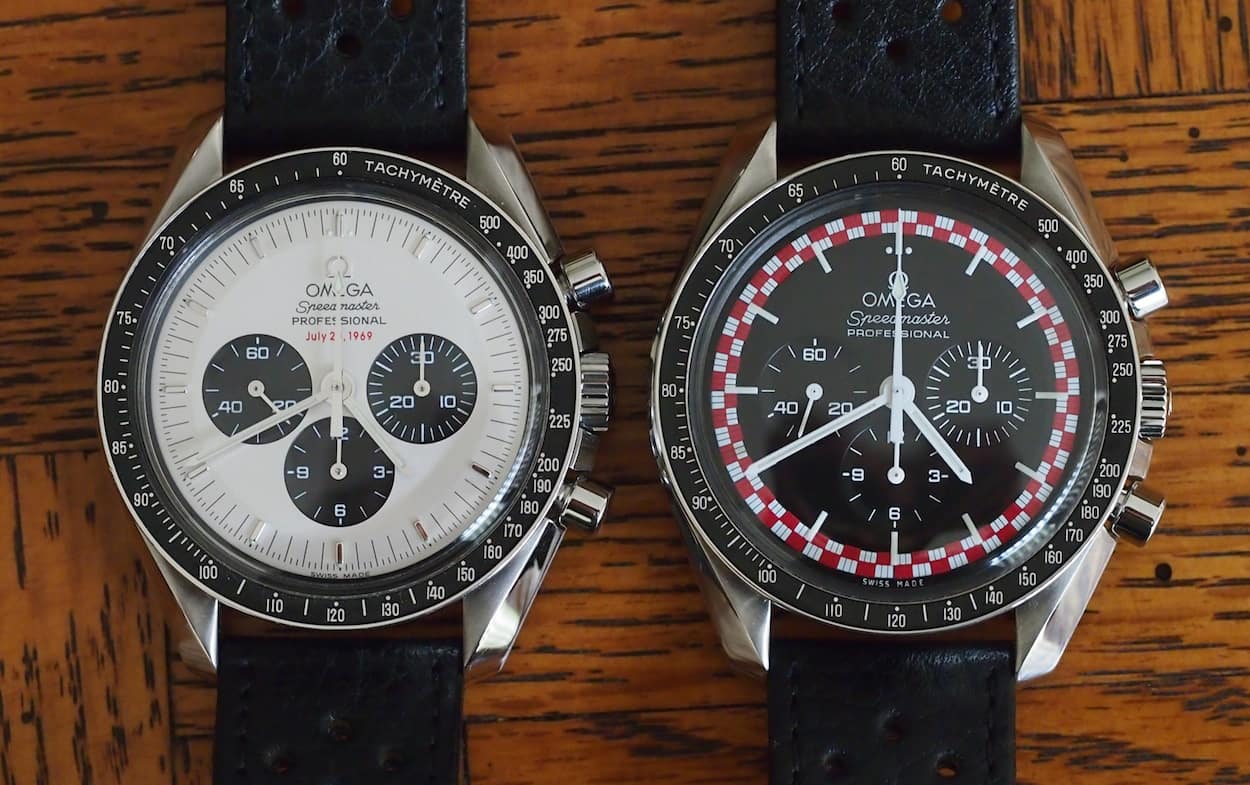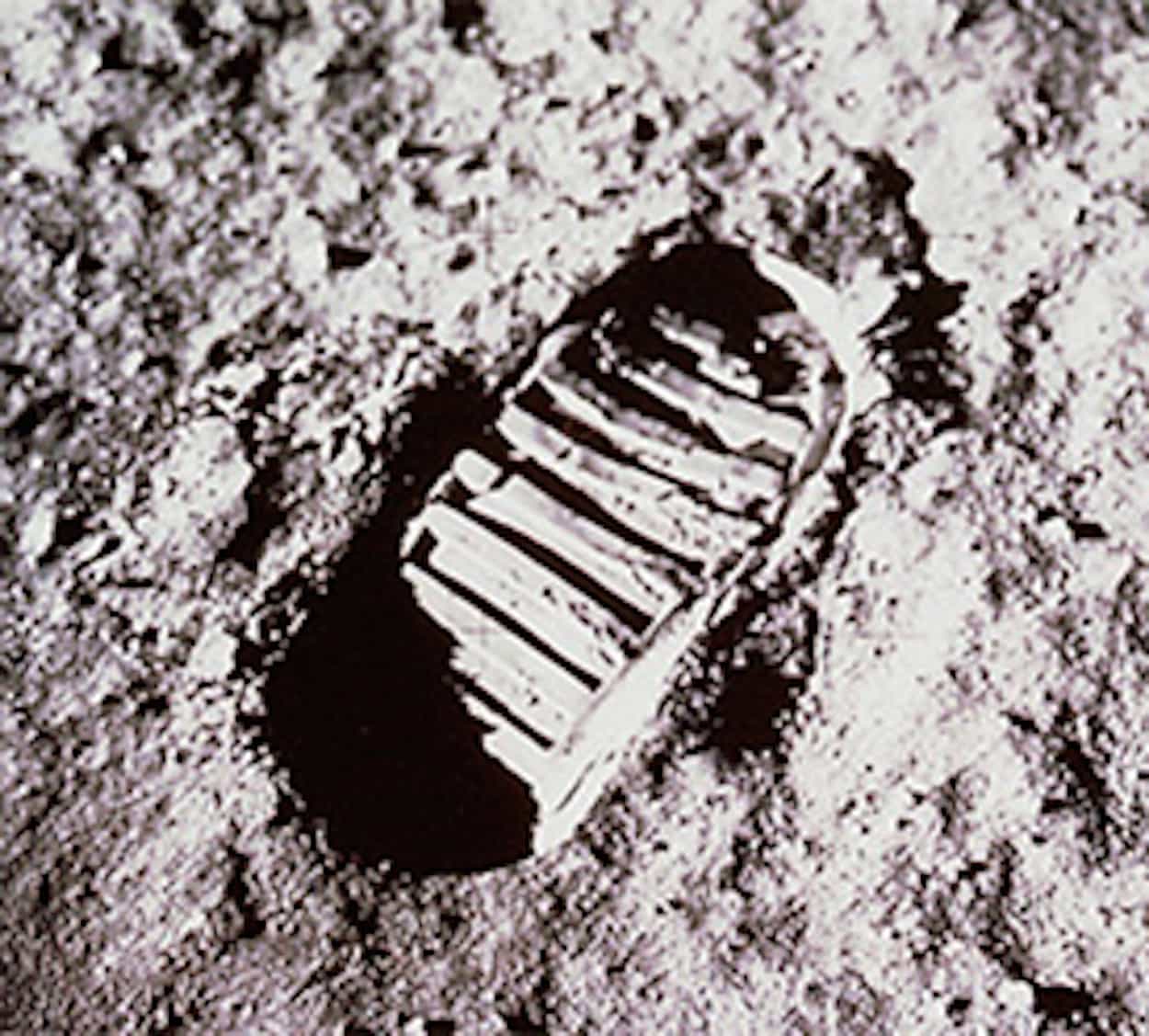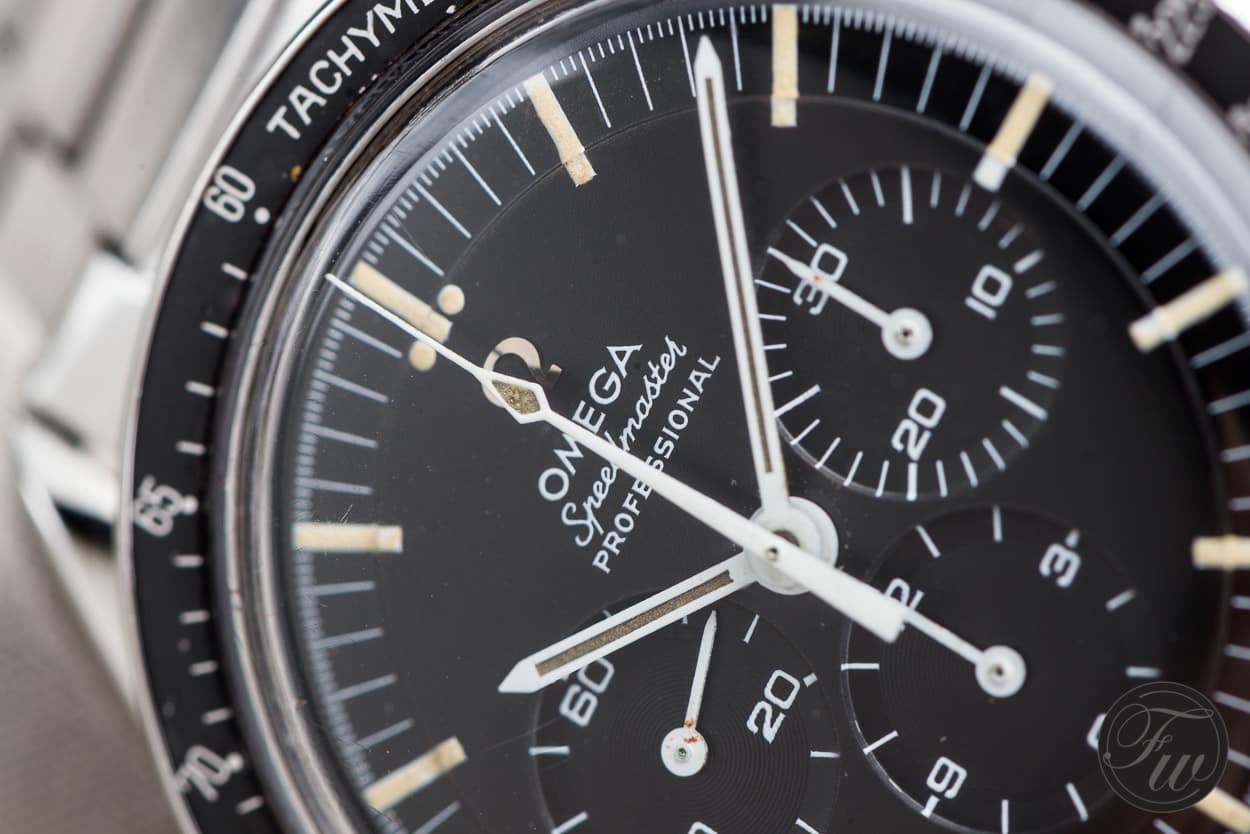Speedy Tuesday – How I Learned to Love the Speedmaster
To many people, when they hear “Fratello Watches”, they think of the Omega Speedmaster. Robert-Jan’s love for this iconic chronograph spawned a weekly column – you’re reading it – on the subject and far more related articles for discussion. Of course, the detractors out there, everyone has them, state that we talk about these chronographs too frequently and that we’re shameless fanboys. Then, the typical follow-on comment I hear is negativity about the fact that Omega really leans on the whole “Moonwatch” thing and that it’s overplayed and long in the tooth. Well, to address the first statement, the members of this site are fans – some newer than others, but more on that in a moment – of this important watch and so are the bulk of our readers. Second, and returning to the surprising news that not all of us are longtime lovers of the watch, I was one of those people who long dismissed the significance of the Omega Speedmaster. So, why have I changed? What’s happened? Well, I’ll attempt to tell you. Today’s SpeedyTuesday isn’t really about any one watch. No, it’s a bit of a yarn about – and I’m cribbing Stanley Kubrick’s Dr. Strangelove – the Omega Speedmaster or: How I Learned to Love the Moonwatch.
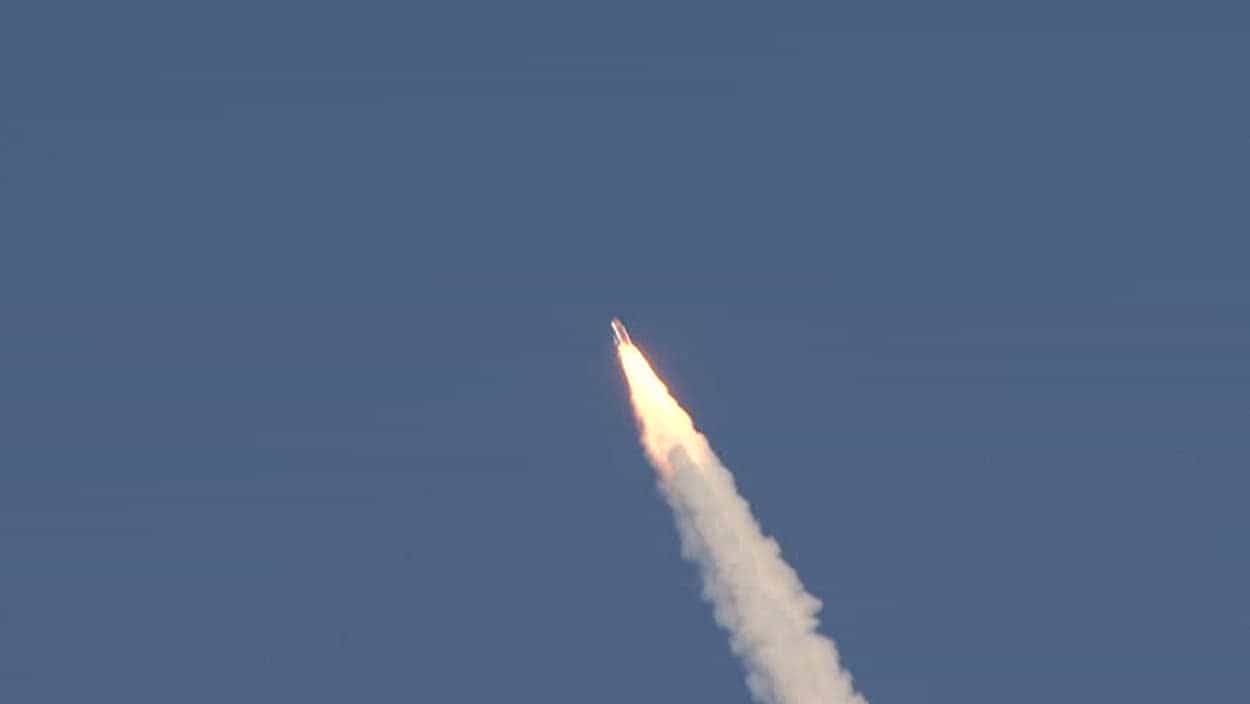
This was a relatively common site from my driveway in South Florida if the skies were clear. (Photo credit: stock-clip.com)
A Childhood in Florida didn’t do it…
I’ve mentioned this before, but I grew up in South Florida. In fact, I was only a short 2-½ hour drive from Cape Canaveral: the site of the Kennedy Space Center. As they once said on MTV Cribs, this, folks, is where the magic happens. So, space travel was nearby and as a child of the 80’s, there was no shortage of available or visible Space Shuttle paraphernalia. In fact, despite watching so many live launches either on TV – they were on every channel – or being able to step out to the driveway to see the shuttle take off on a clear day, space travel became, dare I say, normal to me. Sure, we as kids thought astronauts were amazing, but the shuttle just went and after several launches, it became, as I said, commonplace. Then, in 1986, there was Challenger and it all changed. The innocence, for my generation at least, was gone.
I recall sitting in Mrs. Grant’s 3rd grade classroom when the principal announced the disaster over the intercom. We went to the adjoining classroom – it had a TV – and watched the coverage for hours and hours just thinking there had to be an explanation and that it wasn’t true. We honestly didn’t know much about danger at that age, but the whole fantasy of space travel suddenly took on a much different persona. Kids didn’t really dream of being astronauts after the incident – sad stuff indeed. Everyone mourned the loss of the Challenger, but we Floridians really felt it. I mean it happened in our state and we even felt a bit responsible or that these astronauts were ours. Soon after, it was a common thing to see Florida-issued Challenger license plates (plates dedicated to the Challenger and Columbia are still available). I have to say that the Challenger disaster was one of those Kennedy moments for my generation. In America at least, everyone’s parents and grandparents could tell you where they were when JFK was shot in Dallas.
In any case, it was safe to say that while space travel was still interesting and we loved looking at all the rockets and things at museums like the Smithsonian, peril had entered the picture. Space left my mind for a while, but the mention of Kennedy is significant.
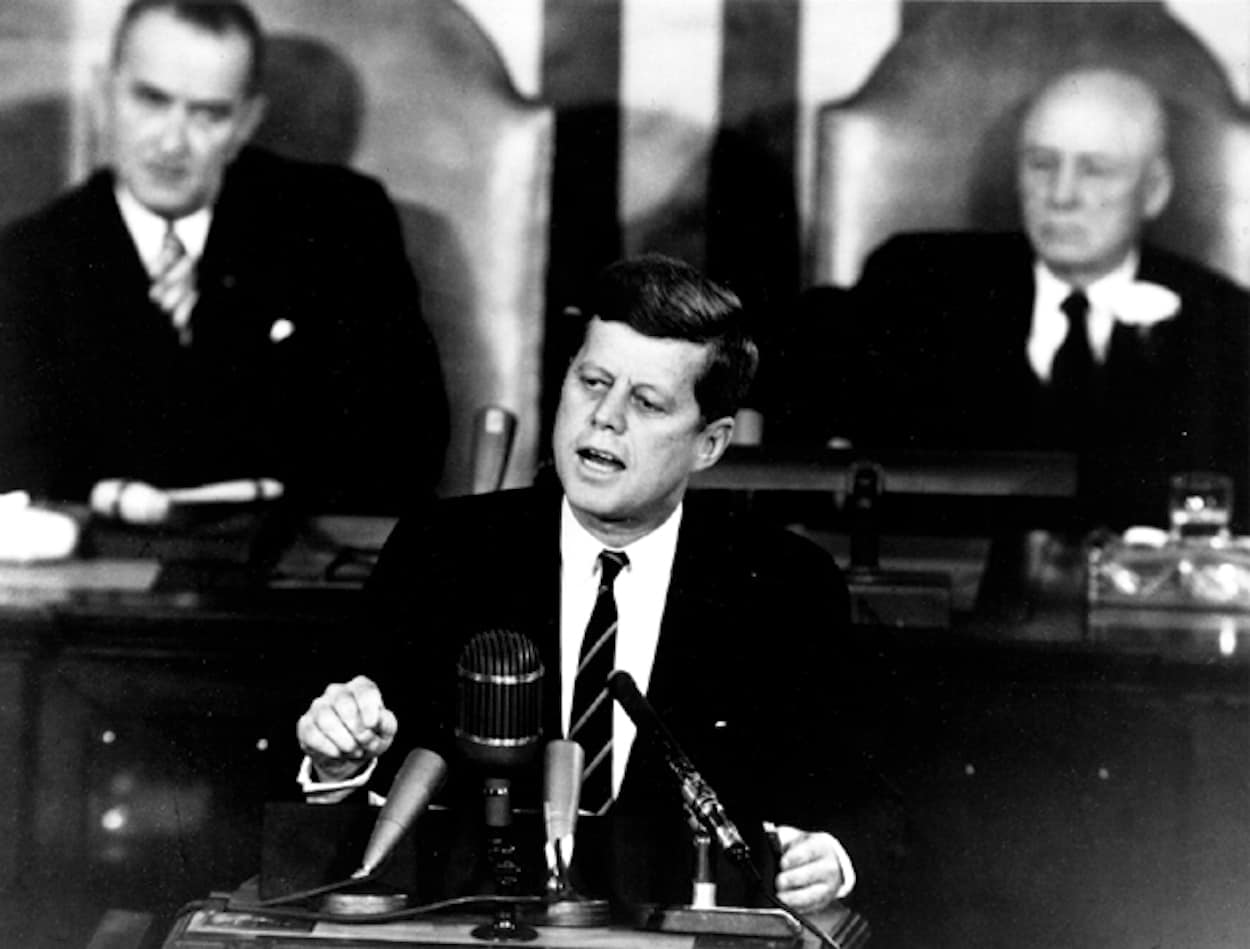
There it is: the ay that JFK threw down the gauntlet to the US Senate. In 1961, JFK declared the USA’s intentions to send a man to the moon and return him safely by the end of the decade. (Photo credit: NASA)
The Vision…
I’ve always worked for large companies and if you know anything about large companies – even one thing – there’s a large focus on training. There are myriad reasons for training such as compliance and process knowledge, but a major goal is to inform employees of the company’s direction and to achieve alignment. Vision statements are useful tools in this aim and the one that was referenced when I started working in the late 90’s and is still the most common I hear today is the following:
“I believe that this nation should commit itself to achieving the goal, before this decade is out, of landing a man on the moon and returning him safely to earth.” – President John F. Kennedy, May 25, 1961
Honestly, when you read it, and it’s nearly 55 years old, it’s pretty amazing and absolutely comprehensive despite its brevity. Unfortunately, I didn’t take the time to truly think about the real meaning of this statement and why it was so important (for more see the JFK Library and NASA). Actually, in most corporate training classes, the background of why the statement was made is not terribly important. Instead, trainers focus on the contents of the statement in order to help others build similarly poignant mottos. So, here again, I missed my chance to grasp the significance of space.
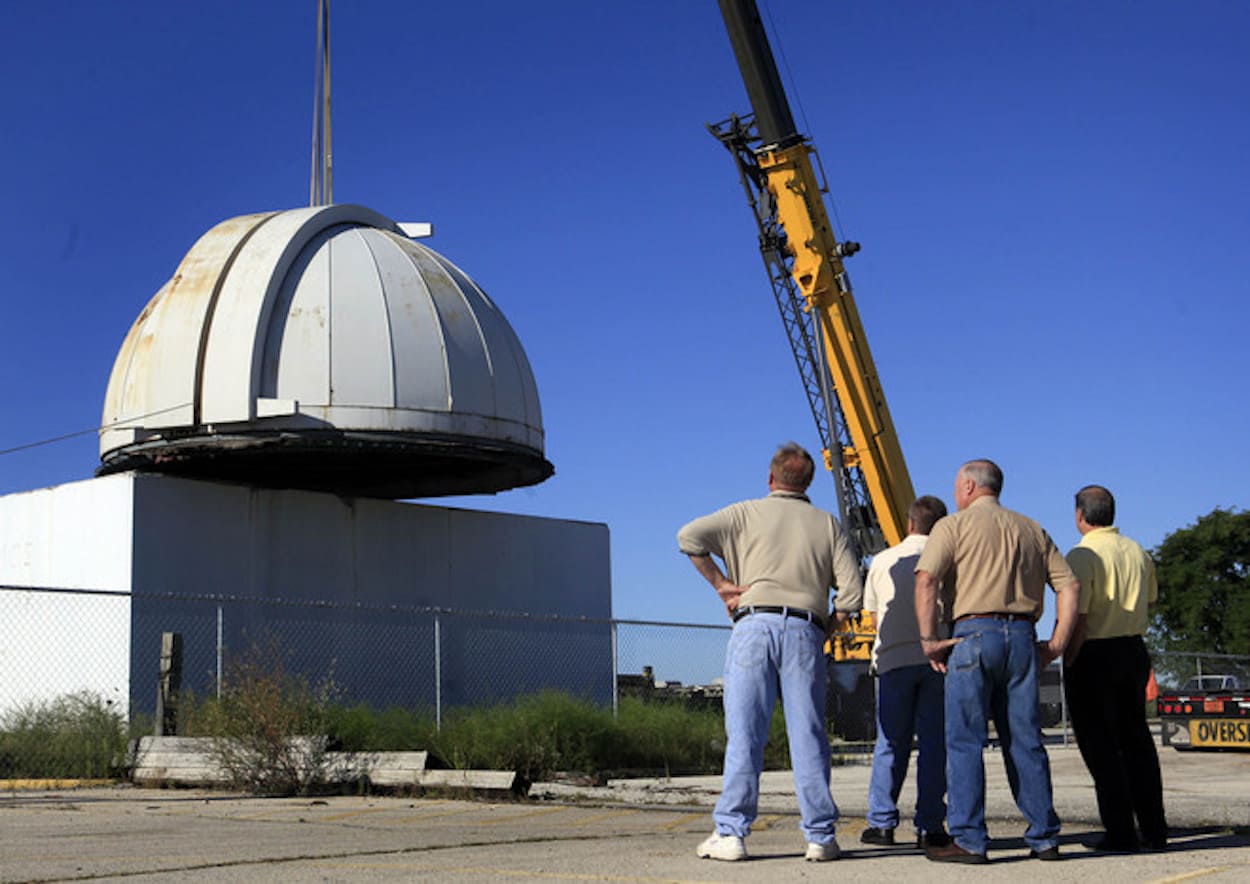
The observatory dome from the former Delphi Automotive plant in Oak Creek, Wisconsin where I used to visit. This is where thousands of employees helped develop navigation systems for the Apollo missions. This dome was installed int he 1950’s and monitored space flights. (PHOTO:KRISTYNA WENTZ-GRAFF / [email protected])
The Skeletons of the past…
I moved to Detroit in early 2001 and had the opportunity to visit a lot of “rust belt” industrial towns during my almost 10 years there. For a period, I traveled frequently to a former General Motors plant in Oak Creek, WI – it subsequently became a Delphi plant and closed in 2008 – and I saw something interesting upon arrival. When I pulled into the parking lot, I saw a large dome-like structure and asked about it. One of the more experienced folks there told me that it was used in the development of navigational controllers for the “Moonshot”. He then pointed at a massive building still on the property but across from the functioning plant. It was empty and he told me that the building was originally constructed purely to house employees who were working on this all-consuming project. This blew me away and briefly made me wonder about whether there were other massive installations once dedicated to this massive project, but my focus quickly returned to the matters of current production.
So what did it?
I guess when I started spending a lot of time in Europe in 2011, I began to think more about the significance of space travel. My wife has a good friend who works at the ESA in The Hague, Netherlands and the fact that the ESA always seems to be sending some sort of satellite to the heavens made me a little sentimental about my various run-ins with space. It was at this time that I started thinking about finally adding a Speedmaster to my collection. It did take a couple more years, though, and it’s ultimately what landed me here at Fratello. You see, I contacted Robert-Jan and asked if he had a good authorized dealer contact to purchase my first Speedy, a “Tin Tin”. RJ sent me to the good folks at Ace Jewelers in Amsterdam and the rest, as they say, is history.
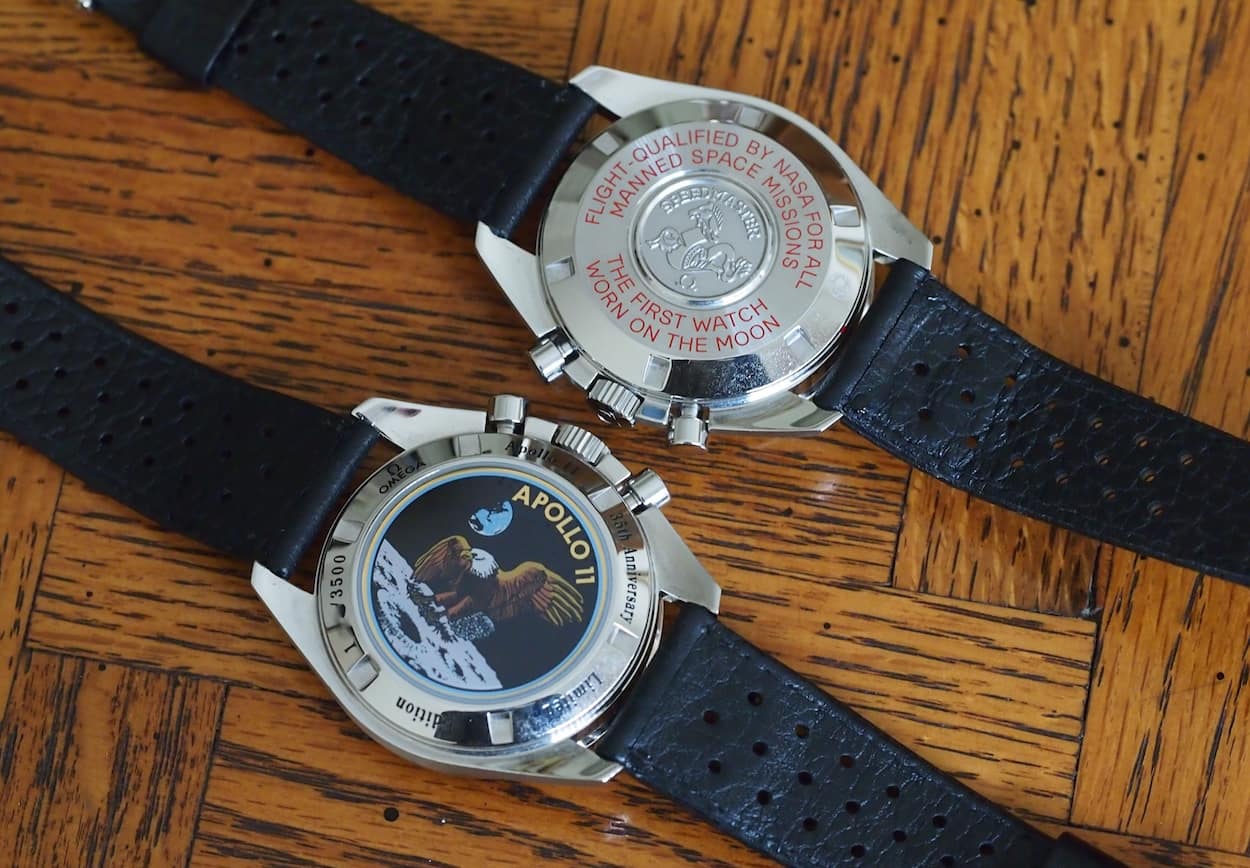
The caseback on the Tin Tin up top and the Apolo 11 35th Anniversary below. The flight-qualification verbiage isn’t just “a line”
Not so fast…chalk it up to more reading, but even though I said I was done with adding Speedmasters after one, and oddly still lacked interest in vintage examples, I started reading more about the Space Race. What I found was astounding.
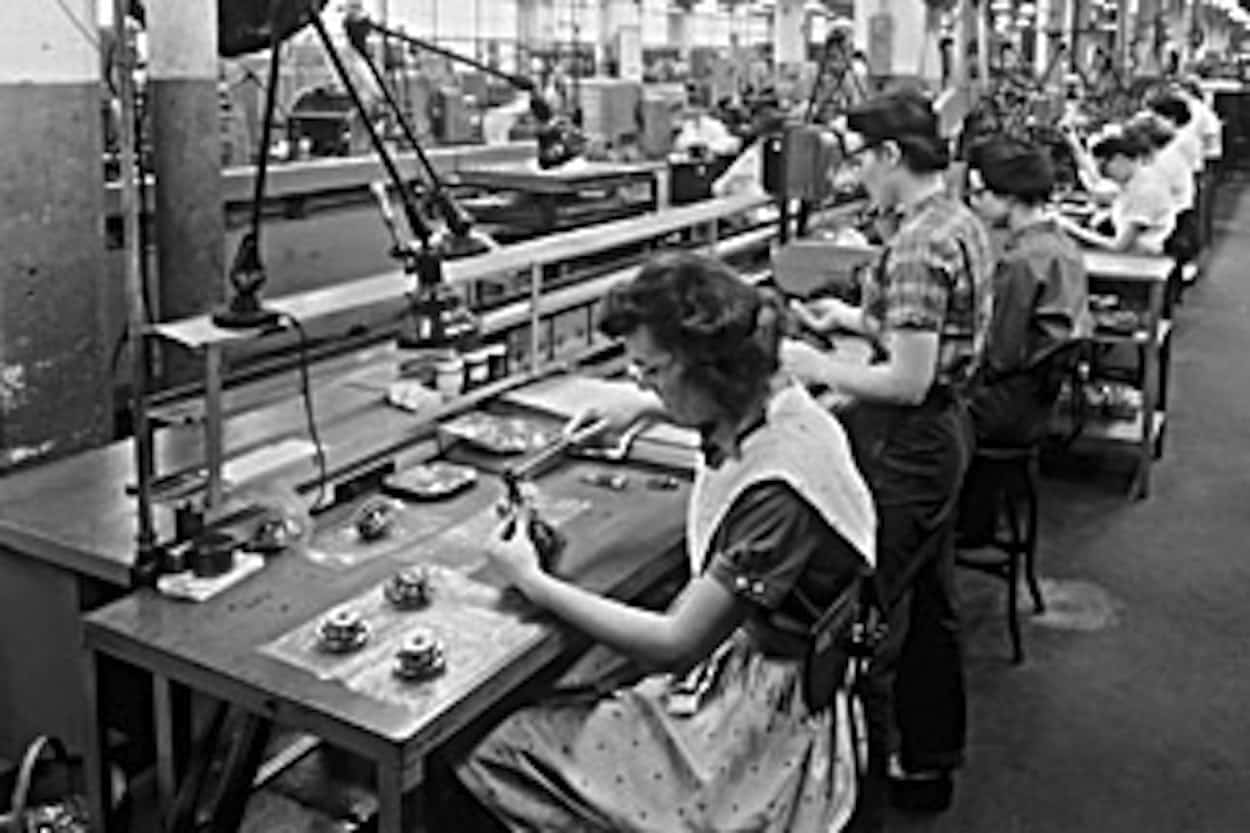
A look at workers in the late 1950’s at the Oak Creek, Wisconsin GM/Delco Plant – the plant went on to make navigation systems used on the Apollo missions. They were just soem fo the >400,000 people working on this historic mission. (photo credit: gmheritagecenter.com)
Astounding…
Did you know that when the Space Race was in full swing, over 410,000 people were dedicated to working on the Moonshot? Let that sink in…410 THOUSAND. To put that in scope, the nearest sized American city as of 2012 was, interestingly as it’s somewhat close to Cape Canaveral, Miami. Think of the entire city of Miami working on one project simultaneously. Again, to clarify, this wouldn’t have been the city of Miami functioning as a “company town” like Detroit or Pittsburgh that was focused on cars or steel. No, this would have been akin to Detroit working on one car that had to something extraordinary – once. It’s mesmerizing to think of it this way and I’m not sure we will see anything like it again. In fact, the only similarities that come to mind are the economies during the World Wars. Again, though, while the findings prior to and after the initial Moonshot helped provide a platform for future launches, the initial work was done for one, just one, launch.
![IBM's Yorktown Heights lab - so much was developed here for the space program (Photo credit: Library of Congress, Prints & Photographs Division, Balthazar Korab Archive at the Library of Congress, [LC-DIG-krb-00528])](https://www.fratellowatches.com/cdn-cgi/image/anim=false/wp-content/uploads//ibm-yorktown-korab-2.jpeg)
IBM’s Yorktown Heights lab – so much was developed here for the space program (Photo credit: Library of Congress, Prints & Photographs Division, Balthazar Korab Archive at the Library of Congress, [LC-DIG-krb-00528])
The astronauts. The 3 who went to the moon, those who came before them and those after are explorers. In my opinion, they’re absolutely the same as those who got into ships and sailed around the world to undiscovered lands 500-600 years ago or those who ventured across uninhabited lands to some far-flung places during the age of discovery. While I hope we discover more further away in space, these men who went to the moon were pretty amazing. Brave, ridiculously trusting in semi-reliable technology, and fitted with huge egos to boot (if you believe in the Right Stuff, that is), these folks were pretty special. And of all the wild, “space age” gear, gold foil-covered landers, and odd screens these guys were surrounded by, there was one rather pedestrian “thing” that they used during their missions. This “thing” was a watch and it obviously happened to be an Omega Speedmaster Professional.
It actually took the combination of thinking about the efforts, the innovation and the people involved to make me realize the true importance of the Speedmaster Professional. All at once, I dismissed any thoughts of Omega’s Moonwatch ads as hackneyed or sad attempts to relive former glory. I also started to think about other brands and their omnipresent attempts to gloat about various accomplishments of derring-do only to be let down by the fact that none of them can ever vie to reach the moon first. Whether it’s a perilous climb up a mountain, a trip in a submersible to the abyss, or the winning of an annual World Championship, none of these compare to hurtling through space at some ridiculous velocity and stepping onto the surface of another planet. But man oh man, Omega was lucky…
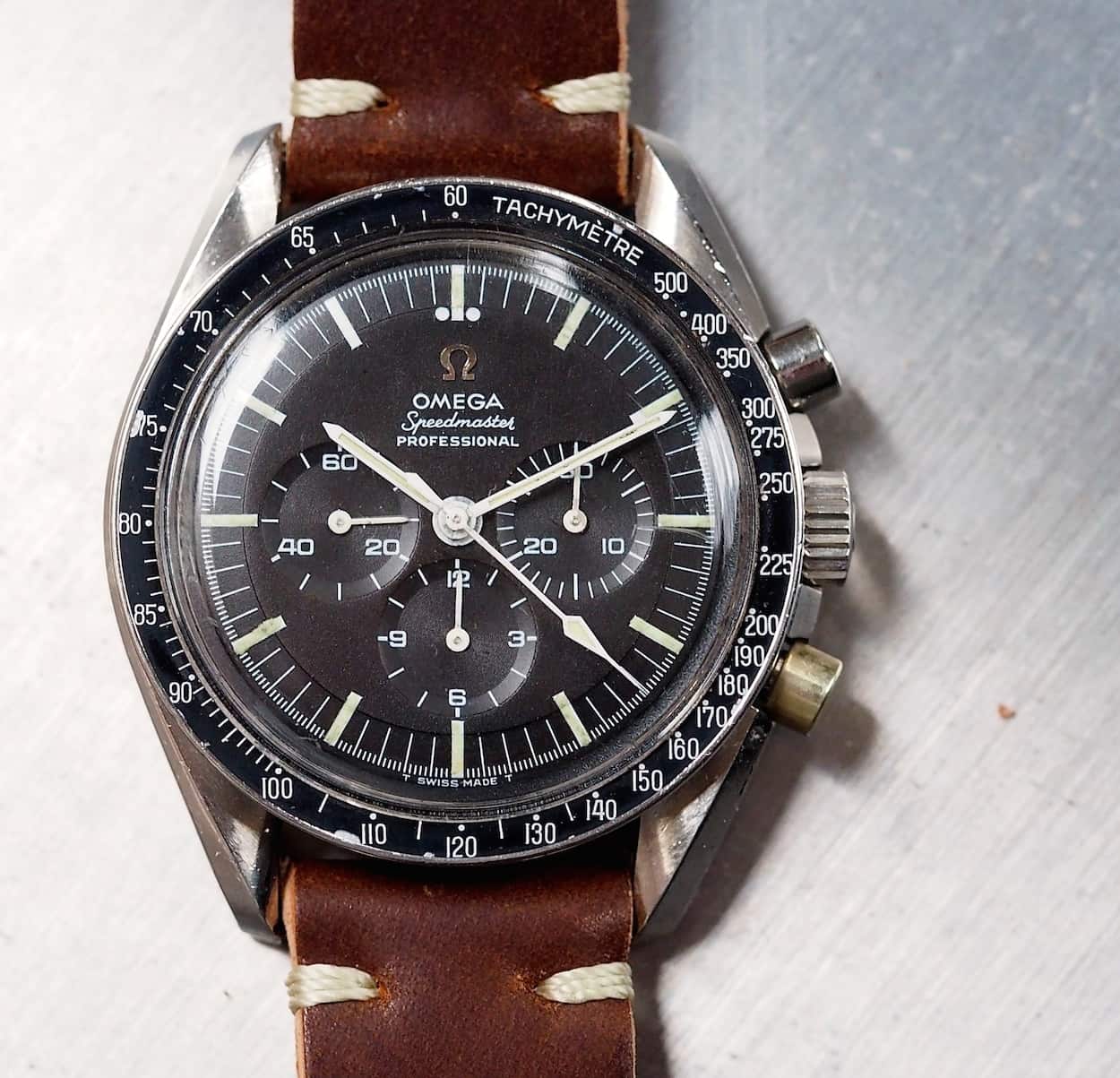
Another recent pick-up, a well-used but solid Omega Speedmaster 145.012. The design is simply iconic.
History got it right…the Speedmaster won out
For as many people as NASA threw at seemingly every other system used in the Apollo 11 system, the choice of watch seemingly happened with relatively little forethought. Ok, for sure, NASA ended up putting the Speedmaster through a battery of tests to help simulate environments likely to be seen outside of the space capsule, but the fact that NASA didn’t work directly with any watch manufactures to design a tailor-made chronograph is interesting. Astronauts were meant to use the chronograph for a variety of reasons, not the least of which was as a backup timer for the relatively untested systems onboard. So, yes, I find the fact that a custom-made watch wasn’t employed somewhat odd. Obviously, though, it worked – or at least didn’t fail.
Still, though, NASA did apparently source a number of “off the shelf” chronographs for their testing including the Omega, a Rolex chronograph, a Longines-Wittnauer chronograph and others. Aside: can you imagine being the lucky soul who got to order these watches with the NASA company card?!?! The fact that the Speedmaster won out seems almost poetic today.
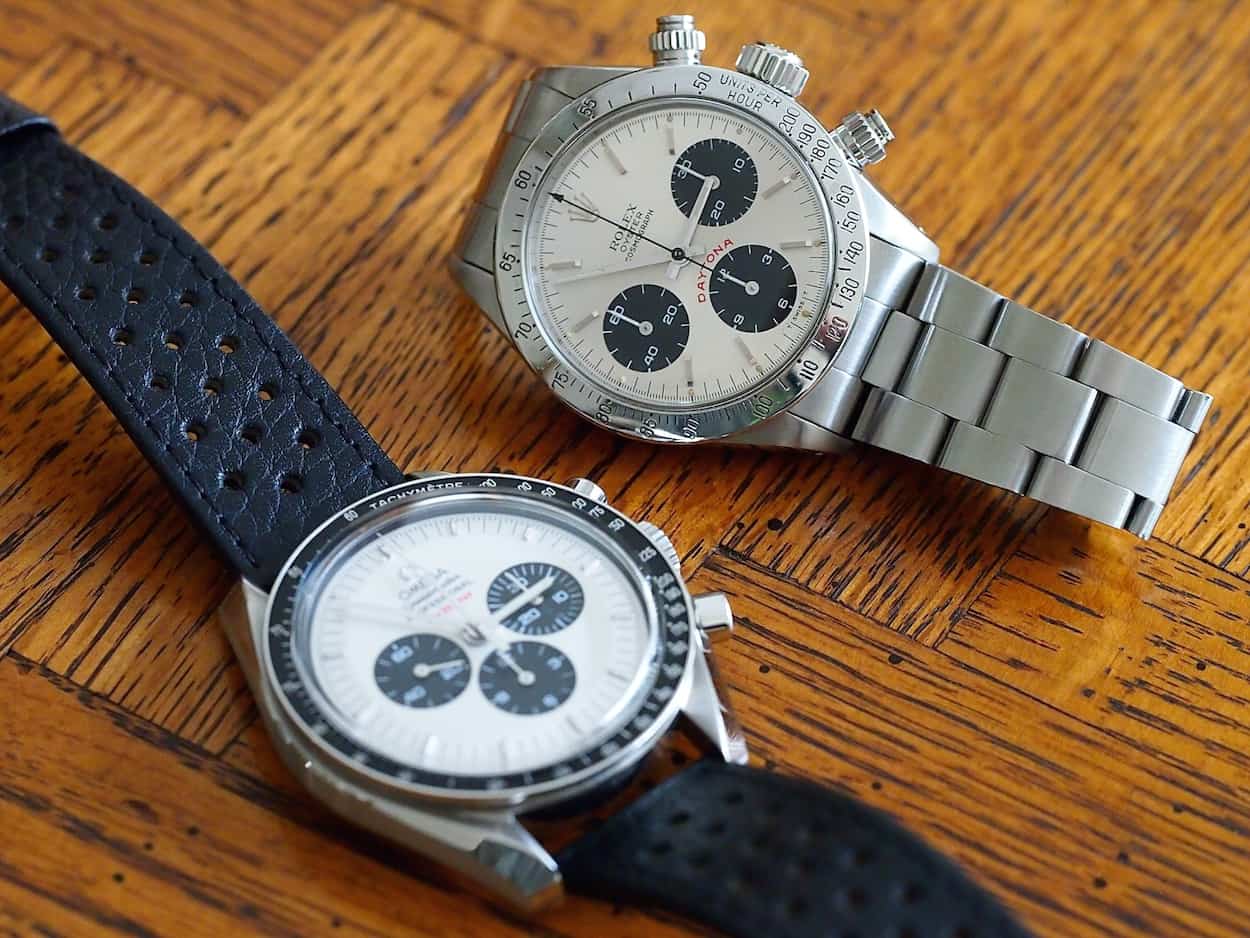
While it wasn’t a Daytona that was tested for the Moonshot, I’m still pleased that Omega won the day – it’s good to have different brands linked to different achievements.
Let’s be honest, Rolex is a legendary company, but somehow I just can’t picture a 37mm watch on the arms of astronauts. No, that spacesuit deserves a bigger, bolder watch – 42mm works perfectly fine thank you. Furthermore, Rolex owns the mountains and the sea. Would it really be fair if they owned space too?
Then there are the looks of the Speedmaster Professional. As I said, these are big watches and they look the business. In the late 1960’s when a transition point from analog to digital was underway, the Speedy looked very instrumental. Chalk it up to an all black dial with highly purposeful script and measurement lines. The font – that script “Speedmaster” is simply perfect.

The USAF Thunderbirds demonstration team logo. The script reminds me a little of that found on the Speedmaster. (Credit: United States Air Force)
Not only is the word appropriate – over 6,000 mph when bolted to the Saturn V!! – but the script itself reminds me of that found on the US Air Force Thunderbirds demonstration team motif. And those twisted lugs seem to complement the jet fighter planes of the time that still had some real beauty. For me, the total design harkens back to a time of test pilots, risk, and guys like Chuck Yeager.
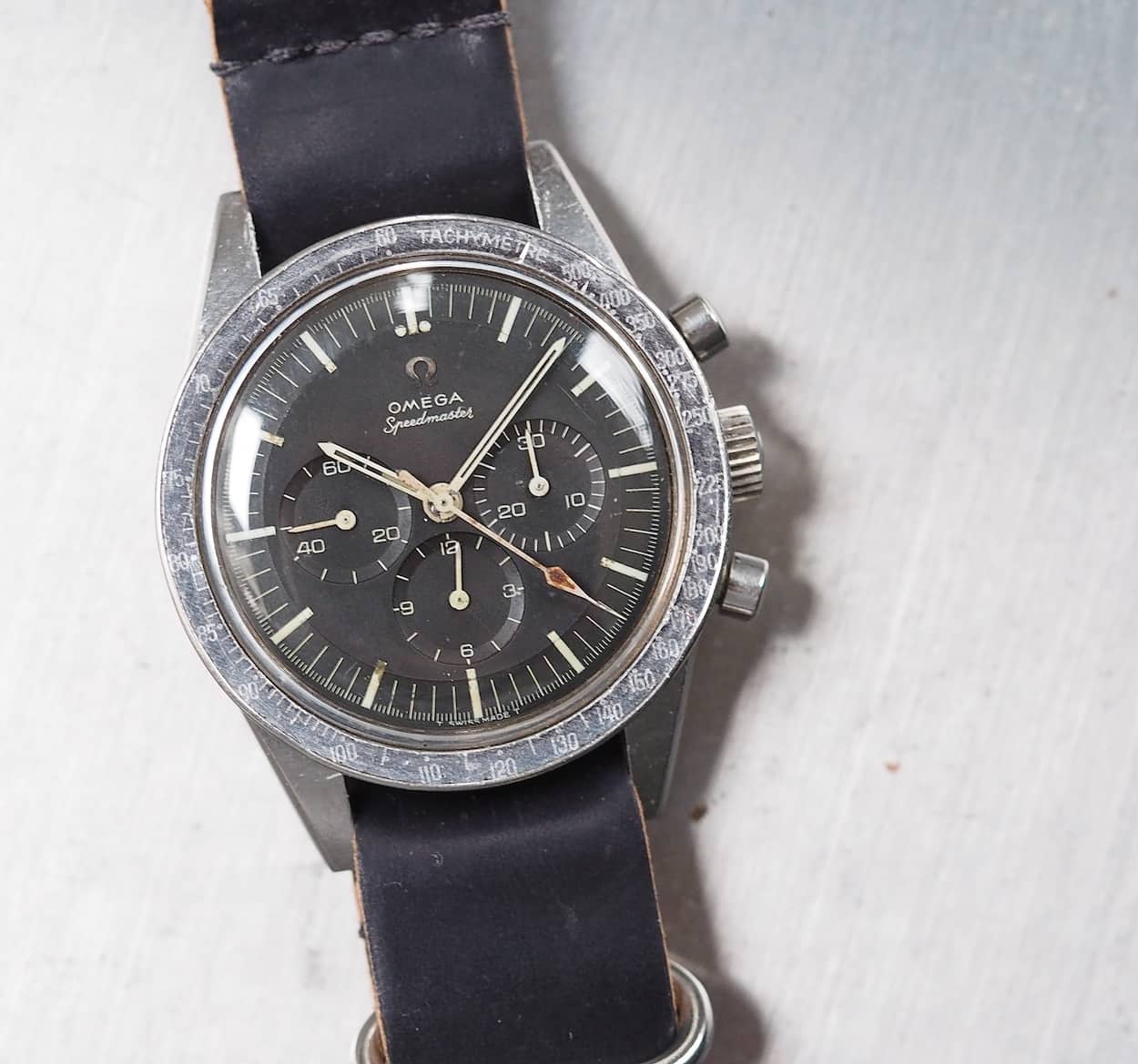
A recent acquisition – a rough and tumble 105.003 “Ed White” Speedmaster. This model was used on the first EVA in 1965.
Yes, fate played into Omega’s hands and they were fortunate to hit a lottery that continues to pay off to this very day. As I mentioned, I had already obtained my Tin Tin when I started to think more about space. More thought has ultimately led to more Speedmasters. Since then, I’ve been fortunate to add a couple rough Ed White (first spacewalker) 105.003 models and a 1967 145.012 with twisted lugs that contains the last of the column wheel 321 movements. Oh, and let’s not forget that I’ve also picked up a Speedmaster II, which was apparently designed with NASA in mind to create a more purposeful space watch.
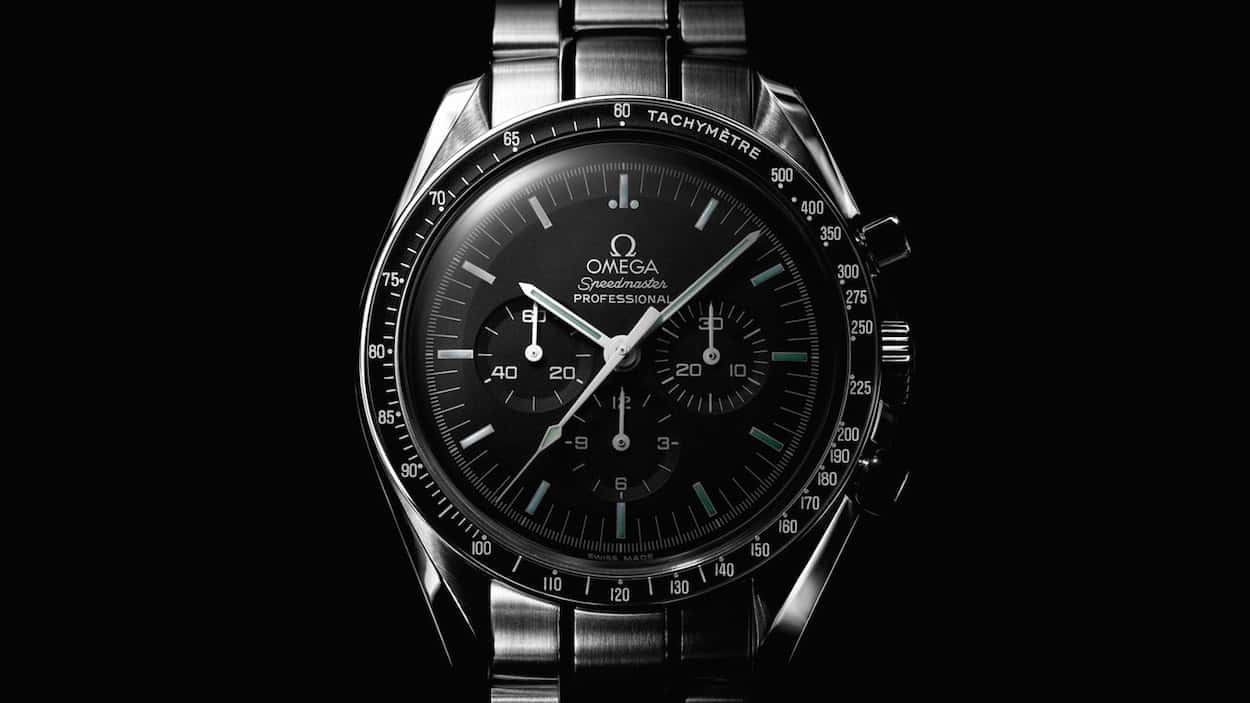
As watch geeks, we should be ever thankful that Omega continues to make the “Moonwatch” in a relatively unaltered form. It’s still my #1 recommendation for anyone ho wants “one good watch”. (Photo credit: Omegawatches.com)
In Conclusion…
If it sounds like I went through more thought on buying and learning to appreciate the Omega Speedmaster than other models I own, you’d be correct. I don’t know why, but I’ve purchased many others “on contact” without a whole lot of thought. Perhaps the two biggest factors are that Speedmasters – even vintage –were everywhere up until about two years ago. I actually must credit my Dad for giving me the advice to buy “Pre-moons” years back before any sort of hype began. He felt that these were way too iconic and it was only a matter of time before people started to plow their unspent, or gained via sale, Daytona money into them. Well, we now know what’s occurred in the vintage Speedy market. Second, and this is interesting, I was in no rush to pick up a Speedmaster because the current model looks so much like the vintage pieces. Well, I no longer feel negatively about this. In fact, now that I’m wiser, I secretly give Omega a “thumbs up” every time I see their watches for sale because I’m eternally thankful that they still offer such an anachronistic watch. That it’s gone relatively unchanged is unheard of in these days of an often “design be damned” approach to adding technology and advanced materials to watches. (Sorry Rolex, but your legendary Submariner “jumped the shark” as far as combining function, beauty and soul with the extinction of the 14060M.) So, Omega, go ahead and make whatever you’d like, just keep the Moonwatch as it is – well, bring back the 1450 bracelet please – and I’ll keep recommending as the one watch that someone should buy if they only want one watch.
So there you have it. I’m officially a huge fan of the Omega Speedmaster Professional. As a member of Fratello Watches, maybe it was bound to happen, but I feel like I took an amazingly circuitous route to get to this point. Now that I’m here, I’ll say it again, the Speedmaster Professional is the most significant watch of the modern generation. (Don’t get upset if you’re a lover or collector of other brands: as you know, I am too!) That’s different than best, hardest to find, most valuable, etc. I simply have a tough time attaching a watch to a series of events greater or more important than what took place during July of 1969. Thanks for listening…


